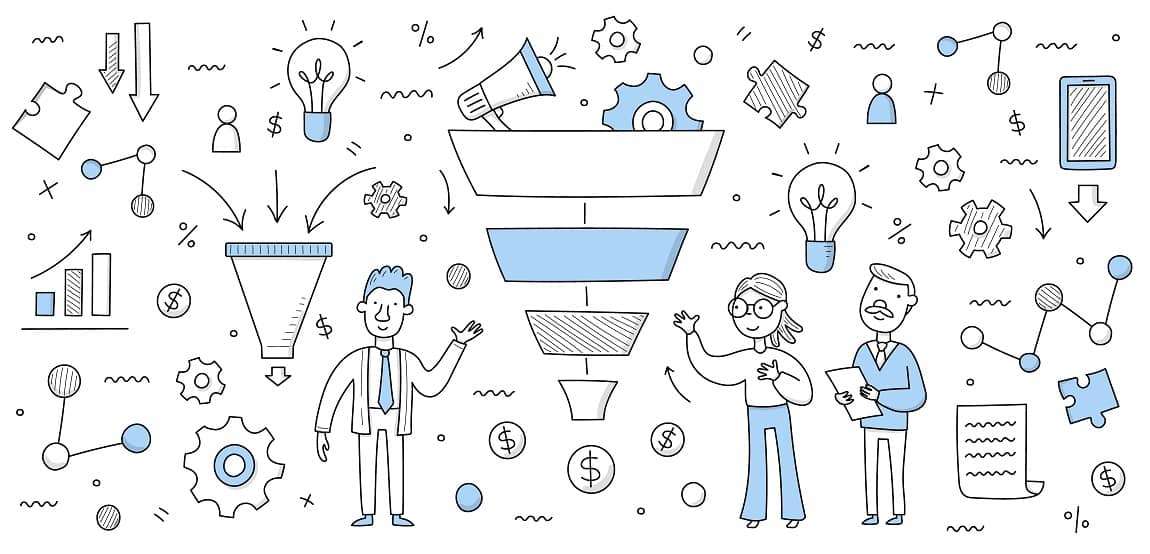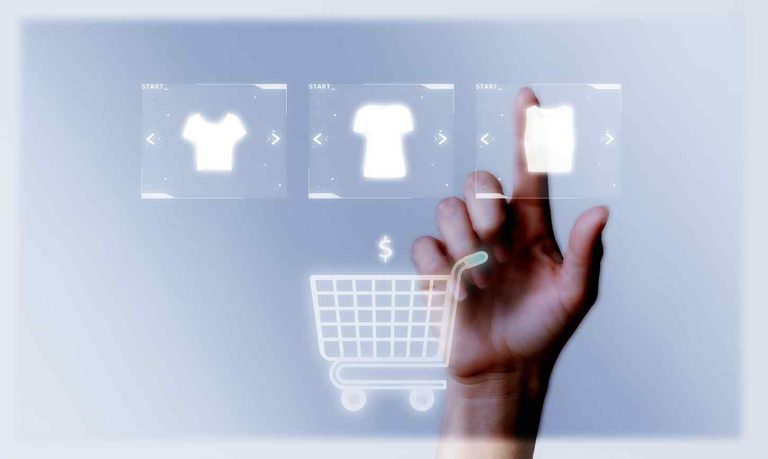Marketing funnel, it’s one of the critical pieces of a marketing process which outlines the straightforward journey customers take on the path to make a purchase. It is a very helpful framework to both connect and engage with customers; after all, with careful analysis, the marketing funnel will help its users to know what the company is required to do to influence the customers at a given stage. It will, in turn, help with lead generation, drive in better sales, loyalty and a stronger sense of brand awareness.
From what we read above and what we are about to read below, it’s clear and it will be apparent that a marketing funnel is essential. However, the question is how does it work? Are there any specific stages to it? Can it be better explained with an example? Well, yes, it’s possible & by the end of the blog, you will have the answers. So, just read along and find the relevance of the content.
What is a Marketing Funnel?
The marketing funnel, or the sales funnel, it’s a marketing model of the customer journey, representing stages of purchases which customers go through after they become aware of a particular service, business or product. When looking at the shape of the funnel, it illustrates how the audience narrows down while the journey moves towards the purchase. Now, while a business would want to minimize the dropouts, one must accept that some people will take an exit at every single stage. It’s always high-quality lead generation which would reach the end.
Even though the reality of the customer journey is complex, with the help of a marketing funnel, one gets a chance to have a simplified framework for the marketers. It helps to understand the audience, tailor the approach as needed, identify any weakness and address it within the customer’s journey, and finally contextualize all of the marketing results. Together, they help to make an effective strategy and hence derive conversion or, rather, sales.
How does the Marketing/Sales Funnel Work?
A marketing funnel functions like its name suggests. It starts as broad and then gets narrowed down and more focused towards the end, creating a funnel shape. For example, the company will have 1000s of views on the website, but only a certain percentage will investigate the products, and a smaller percentage of it will become the customers.
As the sales funnel works, it helps to take direct actions for steering the customers using the funnel process to ensure that they are highly likely to take the desired measure of the company.
Marketing Funnel Stages- With Examples
There isn’t any version universally accepted for the funnel, considering there are different steps which the customers go through during their shopping journey. However, in here below, we have tried to outline 4 stages of the marketing funnel, including,
- Awareness stage or brand awareness
- Consideration
- Conversion and
- Loyalty.
1. Awareness
The first stage begins with the customer research. It involves ways to attract customers towards a brand and then help them to recognize as well as remember the same. Here, the goal is to keep the brand on top of the customer’s mind by using some customer touch points while they go along the purchase path.
The awareness created here can be done through television, digital advertisement, social media campaigns, audio ads, content marketing, etc.
2. Consideration
Herein, the goal is to increase the likelihood so that the customers would consider the brand and the products of it when they shop. This is why it should be made sure that the marketing messages address the pain point, try to highlight the interest or just answer any question that the customers might have. Remember, in this stage, customers get to know about the brand, and it helps them in differentiating it from the others. So, brands must educate as well as inform the customers to help them understand how the product or the solution they are offering would meet their needs.
Examples- positive customer reviews, case studies, webinars, customer testimonials, etc.
3. Conversion/Decision or Purchase Phase
Herein, the goal remains to encourage shoppers to purchase the service/product as they believe they made the right decision to get the needed solution. So, this stage is like an opportunity for the brand for investing in a strategy which would help them in standing out in the category while differentiating themselves from the peer products.
In here, it will therefore be important to create a detailed website with product pages and offer exceptional customer service for inspiring the confidence of customers in the buying decisions.
This stage is easy to measure, but remember, the previous two stages are important as they create a direct influence when the customers finally convert.
4. Loyalty
Loyalty can be fostered with a seamless purchase experience or delivery of the product and services faster. For example, Starbucks offers free drinks for customer surveys, making customers more fulfilled. It helps them to stay on top of the mind of a consumer when they have to choose between the other brands.
It is important to have positive interactions both during & after the purchase stage. It helps influence if the shopper would become a repeat customer. Without any plans for fostering the loyalty of customers, brands will find it difficult to retain customers. For building loyalty, it’s therefore important to engage with the customers who invest in the services and products of the brands.
For the effectiveness of engagement marketing, social media activation, loyalty programs, or email nurture campaigns can be continued. It will create an impact when it comes to the building of brand loyalty and do not miss out on reading upper funnel vs lower funnel.
Final Words
Well, by now, you already know about the entire marketing funnel strategy and how it helps to create awareness and then conversion. Hopefully, it makes sense to you now and will be implemented ahead in the omni-channel journey. Believe us and you will soon see the results for yourself through brand awareness, 2x or more purchases, increased consideration, etc. Just while counting through results, do not forget to adjust the sales funnel for suiting up to the user’s persona, in order to make your strategy highly effective.



